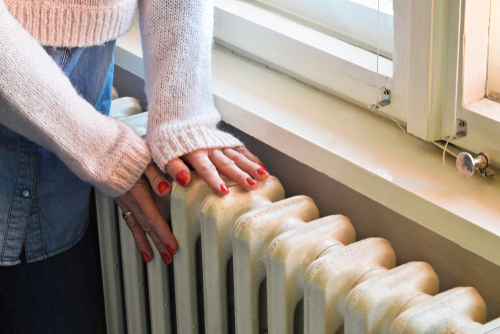Campaign to save LIHEAP comes down to the wire

September will be an anxious time for both utility companies and advocates for the poor nationwide as Congress decides the fate of the critical Low Income Home Energy Assistance Program (LIHEAP).
Lawmakers will have their schedules full when they reconvene for the fall congressional session as summer begins to fade and millions of low-income Americans start worrying about having to heat their homes this winter with fuel that they may not be able to pay for. That’s because, for the second year in a row, the Trump administration has proposed a federal budget that would completely eliminate funding for LIHEAP, leaving it up to a divided Congress to reinstate the dollars.
As August closes out, supporters of LIHEAP expect September to be a white-knuckle ride as winter closes in and social-service agencies prepare for the start of a heating season that technically has no federal funding beyond Oct. 1, the official start of the 2020 fiscal year.
“Too many vulnerable people are depending on this program,” said Katrina Metzler, executive director of the National Energy and Utility Affordability Coalition (NEUAC), a Washington 501(c)(3) non-profit that advocates for low-income families.
The Democrat-controlled House moved quickly at the beginning of summer to not only reinsert LIHEAP funding to its own budget proposal, but also increased it by $150 million over last year to a proposed $3.8 billion. But organizations such as NEUAC saw no similar moves on the Senate side during August. While President Donald Trump signed a two-year budget agreement earlier this month, Congress must still pass detailed funding bills for fiscal year 2020.
That doesn’t mean, however, that September will be left to chance, particularly since the White House proposal has been fairly dismissive of the LIHEAP program. The “budget blueprint” released by the White House in the spring said, “Compared to other income support programs that serve similar populations, LIHEAP is a lower-impact program and is unable to demonstrate strong performance outcomes.”
August in steamy Washington is not particularly conducive to thoughts of furnaces kicking on, but NEUAC declared it LIHEAP Action Month and coordinated an outreach program that focused on convincing lawmakers that the program was worthy of funding because it directly benefited their constituents; the Department of Health and Human Services said 5.6 million U.S. households received LIHEAP assistance in fiscal year 2017. The fiscal year 2018 LIHEAP program estimated the average benefit per household for heating assistance at $410.
“We spent the August action month encouraging people back home to talk to their representatives,” Metzler told Daily Energy Insider. “It’s a program that affects people in your neighborhoods. The ($150 million) is a modest increase that would help a lot of people.”
“We are waiting on the Senate,” Metzler said. “Mid-October is when we usually see a funding decision and then see the funding released.”
A large part of the urgency stems from the administrative effort that comes with registering people for the LIHEAP rolls and managing the block grants. Even as the Senate shut down in August, advertisements were running in towns nationwide calling on qualified individuals to sign up for the program despite it being on the chopping block. Metzler said programs that conserved the 10 percent funding they are allowed to roll over from last year will be able to at least get this winter’s program off the ground.
“The people who are hardest pressed by this are the local administrators,” Metzler said. “The program has an Oct. 1 start date but having to start while we are still hanging around here in Washington makes it tough.”
The focus will shift more toward The Hill in September as supporters of myriad causes and the standing army of various industry lobbyists scramble for a coveted seat in Washington’s annual game of budgetary musical chairs. The advocates for LIHEAP will be in the thick of things with a continuing program of community education and the run-up to National Weatherization Day on Oct. 30 to spread the message that LIHEAP is far from a lower-impact program. “We are always going to keep in constant contact with the folks who are our champions,” Metzler said.
Such champions could include representatives of the energy and utility industries. Block grants for LIHEAP totaled nearly $3.7 billion in the 2019 Fiscal Year, which along with providing revenues to local gas-and-electric companies, also spare the utilities the hassle of collecting on delinquent accounts. Still, the image of utilities clamoring for support of a taxpayer program that directly benefits them will likely keep the industry’s approach more low-key, leaving the heavy lobbying to the politicians and non-profit organizations such as NEUAC.
The chances are likely good that the Senate will come around and get behind LIHEAP during the fall’s funding negotiations, but that won’t make the ride through September any easier as summer fades and the first chills of autumn move in.
Metzler said, “As we approach cold weather, the later they act, the later people will get their funding and the later things will get started.”
